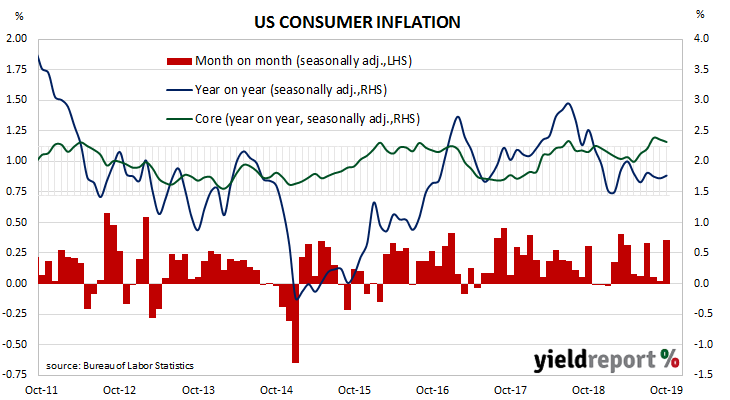The annual rate of US consumer inflation halved from nearly 3% in the period from July 2018 to February 2019 and then subsequently fluctuated in a range from 1.5% to 2.0%. However, “headline” inflation is known to be volatile and so references are often made to “core” inflation figures for purposes of analysis. This measure has mostly ranged between 1.7% and 2.3% in recent years and it has not been below 2.0% since early 2018.
The latest consumer price index (CPI) figures released by the Bureau of Labor Statistics indicated seasonally-adjusted consumer prices increased by +0.4% on average in October, more than the +0.3% increase which had been expected and well in excess of September’s flat result. On a 12-month basis, the inflation rate ticked up from September’s annual rate of 1.7% to 1.8%.
NAB economist NAB Tapas Strickland said the report “suggests core inflation in the US remains contained” while ANZ Head of Australian Economics David Plank said, “There is no compelling evidence that tariff rises have been passed on to consumers.”
Core inflation, a measure of inflation which strips out the volatile food and energy components of the index, increased on a seasonally-adjusted basis by +0.2% for the month, in line with expectations and more than September’s +0.1% increase. However, the annual rate slipped from 2.4% to 2.3%.


